Exploring Imaginative Math: Creativity in Mathematics
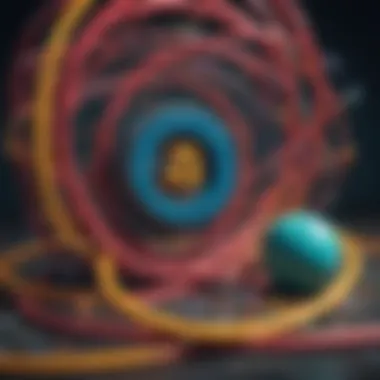
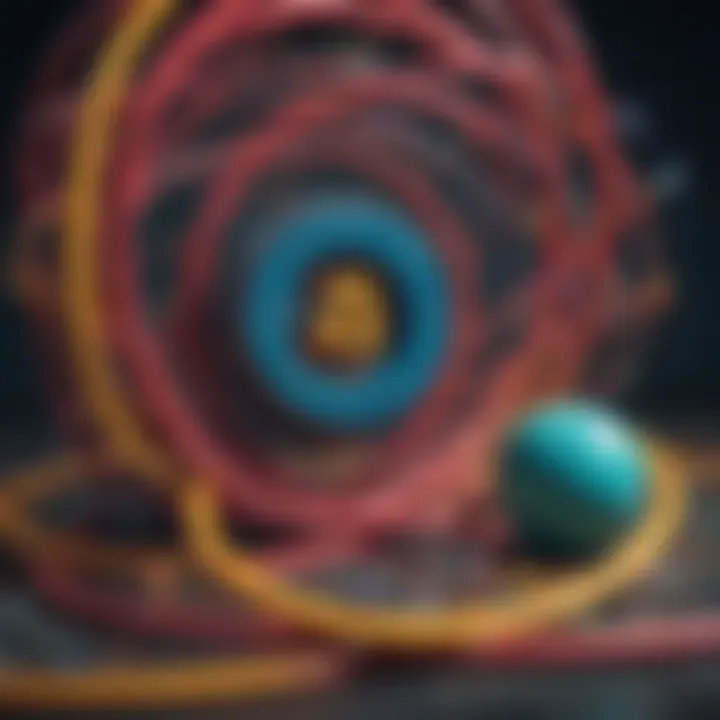
Intro
Mathematics often comes across as a rigid discipline, bound by rules and laws. However, there's a side to it that invites creativity to the table – imaginative math. This concept empowers us to approach mathematical problems not merely through formulas and calculations but with a splash of creativity and a paintbrush in hand. It delves into the idea of combining artistic thinking with analytical reasoning. By exploring imaginative math, we can transform the way we understand complex theories and relate to real-world applications.
The beauty of mathematics lies in its versatility; it is applicable in a slew of fields from engineering to economics. But how does one lure students and professionals into a deeper comprehension of these concepts? That’s where the interplay between creativity and mathematical reasoning blooms. This exploration will shine a light on how such innovative approaches can serve as a catalyst for enhanced problem-solving skills.
"Imagination is more important than knowledge. For knowledge is limited, whereas imagination embraces the entire world, stimulating progress, giving birth to evolution." – Albert Einstein
In this article, we will cover key research findings, the breakdown of complex concepts, and more, in hopes of bridging the gap between abstract ideas and tangible learning experiences. Let's embark on this journey into the imaginative frontier of mathematics.
Understanding Imaginative Math
Understanding imaginative math is akin to peeling back the layers of an onion; each layer holds insight that enriches our comprehension of the broader mathematical landscape. This section sets the stage for exploring the role imagination plays in mathematics, examining how its elements bring about significant benefits in both learning and application.
At its core, imaginative math revolves around the idea that mathematics is not just a collection of formulas and numbers. Instead, it emphasizes the beauty of abstract thought and creative problem solving. When we dive into imaginative math, we uncover a spectrum of approaches to tackle mathematical challenges. It’s about finding unique solutions that lie beyond traditional methods, which can often feel restrictive.
The importance of this topic can be broken down into several key points:
- Enhanced Problem Solving: Engaging with math creatively encourages learners to think outside the box, leading to innovative solutions that might not be apparent through standard equations.
- Building Resilience: Imaginative approaches help students and professionals not just solve problems, but also overcome obstacles in their thought processes. This resilience can have overarching benefits in various life aspects.
- Connecting Concepts: Utilizing imagination in math allows for weaving together different concepts, leading to a deeper understanding. This interconnectedness can turn seemingly simplistic ideas into rich, complex theories.
From a pedagogical standpoint, an understanding of imaginative math can transform the learning environment. It encourages educators to develop curricula that inspire creativity, moving beyond rote memorization to fostering dynamic engagement with mathematical concepts.
"Creativity in mathematics is not just about coming up with new ideas, but about being willing to explore paths that are not immediately visible."
Thus, as we navigate through the realms of imaginative math, we also consider its implications on various educational practices and expert strategies. By enhancing our understanding in this area, we lay the foundation for future sections that delve deeper into specific aspects of creativity and mathematical reasoning.
Defining Imaginative Math
Imaginative math can be defined as the intersection of creative thinking and mathematical reasoning. It encourages practitioners to approach problems with an open mind, envisioning solutions that blend logic and innovative thought processes. This definition is pivotal as it accentuates the significance of perspective in mathematics, suggesting that imagination is not simply an accessory, but a fundamental component of engaging with the subject.
When we define this type of math, it's important to consider its applications across different contexts—be it pure mathematics, applied fields like engineering, or even economics. Learners with a grasp of imaginative math often become more adept at visualizing complex equations and thus can manipulate them with greater ease, enhancing their overall experience and results.
The Role of Creativity in Mathematics
Creativity plays a foundational role in mathematical thought. It acts like the spark that ignites the cognitive engine, enabling individuals to take familiar concepts and apply them in innovative ways. In numerous cases, the greatest breakthroughs, whether they are in solving a difficult theorem or designing a groundbreaking technological solution, stem from the ability to think creatively.
There are various ways that creativity manifests in mathematics:
- Conceptual Visualization: Mathematicians often visualize problems in unique ways, allowing them to grasp complex scenarios efficiently.
- Questioning Assumptions: Creative thinkers challenge the norms and question established principles, which can lead to the development of new theories and ideas.
- Collaboration and Dialogue: Engaging with peers can enhance creativity. Discussion often brings forth diverse perspectives that can lead to innovative solutions.
Innovative methods in interpreting mathematical data and applying it in real-world situations exemplify how essential creativity is. Additionally, this interplay between creativity and mathematical rigor can reshape the educational landscape by showing that mathematics is not just about numbers but a vibrant field driven by imagination and exploration.
Historical Perspectives
Understanding the historical context of imaginative math is crucial for several reasons. First, it sheds light on how mathematical thought has evolved over the centuries, showing the ways in which creativity has influenced the field. Second, it highlights significant figures who contributed to turning conventional views upside down, making space for imaginative approaches. Lastly, it allows current students and educators to appreciate the rich tapestry of ideas that form the backbone of modern mathematics.
The Evolution of Mathematical Thought
Mathematics, in its early days, resembled a rigid structure, focused primarily on numbers and basic operations. However, as societies developed, so did their mathematical practices. One could argue that imaginative math began to take shape when mathematicians started to entertain concepts like infinity and zero. These ideas were once edges of accepted knowledge.
For example, the introduction of zero, attributed to Indian mathematicians such as Brahmagupta in the 7th century, was revolutionary. Before this, the notion of absence or null value was challenging for scholars, and yet, the acceptance of zero opened numerous pathways for creativity in mathematics.
Another pivotal moment was the Renaissance, where figures like Fibonacci introduced a more practical approach to mathematics that supported trade and commerce. His work with the Fibonacci sequence showed how math could reflect natural ratios, stimulating interest in patterns and relations present in nature. This era marked the birth of mathematical thinking that allowed for exploration and curiosity—key drivers of creative math.
In more recent history, the acceptance of non-Euclidean geometry by mathematicians like Gauss and Riemann expanded conceptual boundaries even further. Suddenly, mathematics was not simply about rigid shapes and angles; it became vibrant, filled with curvature and possibilities. This shift is essential because it allowed imagined concepts to be realized mathematically.
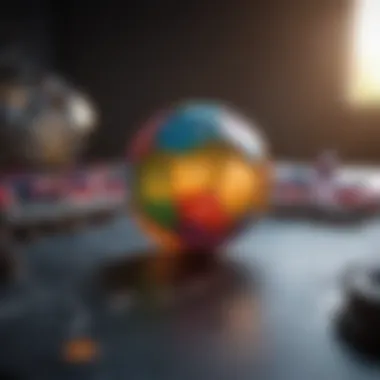
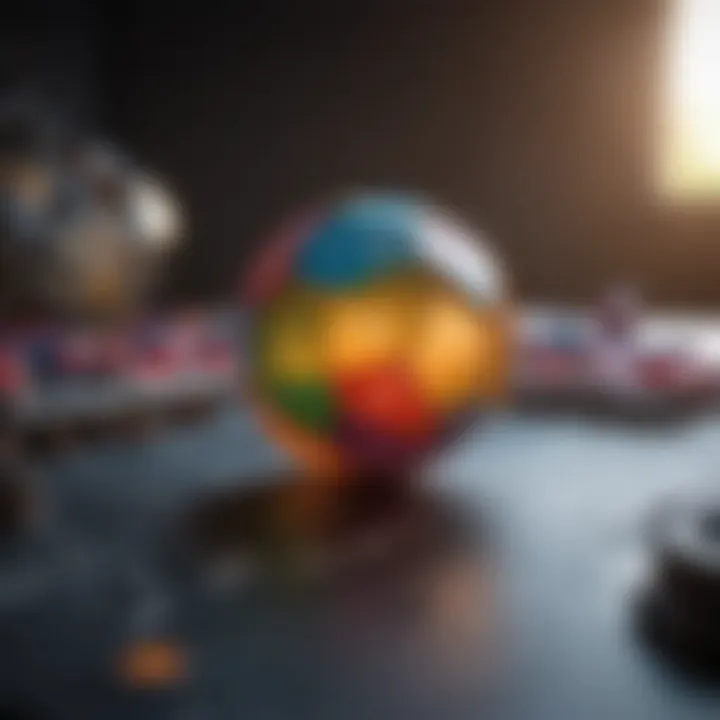
Influential Mathematicians and Their Creative Approaches
Across history, several mathematicians have embodied the spirit of imaginative math, pushing forward the frontiers of the discipline. Here are a few notable ones:
- Ada Lovelace: Often regarded as the first computer programmer, Lovelace's vision of computing was unusually imaginative for her time, where she envisioned potential beyond mere calculations.
- Georg Cantor: Cantor introduced set theory and the concept of different sizes of infinity—ideas that were met with skepticism at first but have now become foundational in mathematics.
- Henri Poincaré: Poincaré looked beyond mere calculations and sought the underlying intuitions in mathematics. He asserted that intuition and creativity are critical components of scientific thought.
Their work exemplifies how creativity can introduce new methods and perspectives. Imagine Cantor grappling with the idea that there are varying infinities; his creative thought process paved the way for deeper explorations of math. Poincaré weaving together intuition and rigor further highlights the balance essential in imaginative math.
While history recounts these stories, the essence of their creativity continues to inspire mathematicians today. Their legacies encourage current thinkers to blend imaginative approaches with logical rigor, fostering an environment where innovative ideas thrive.
"Mathematics is the art of giving the same name to different things." – Henri Poincaré
By analyzing these historical perspectives, we cultivate a richer understanding of the present mathematical landscape. The journey through history not only enriches current practices but also sets the stage for future innovations in the realm of imaginative math.
The Intersection of Imagination and Logic
In the realm of mathematics, imagination and logic aren’t just two sides of the same coin—they're intricately woven together, creating a rich tapestry of understanding that elevates mathematical thought. This intersection plays a crucial role in how we comprehend and apply mathematical concepts because it invites not only structured thinking but also creative exploration.
For instance, consider how mathematicians approach a challenging problem.
- Strategic Creativity: When faced with complex equations or theories, innovative thinkers often step back, allowing their imaginations to roam free. They might visualize the numbers and patterns, conjuring images in their mind that help uncover fresh insights. This initial flurry of creativity can lead to more rigorous analysis, cultivating a deeper understanding of the problem.
- Analytical Precision: Conversely, rigorous logic ensures that once imagination sparks a novel idea, it must be examined critically. Checking formulas, validating assumptions, and calculating outcomes ground the whimsical flights of imagination into reality. Without this balance, mathematical conclusions can easily lead to erroneous paths.
Therefore, the interplay of these qualities fosters not just successful problem-solving strategies but also encourages joy in mathematical pursuits.
"Mathematics is not about numbers, equations, computations, or algorithms; it is about understanding."
– William Paul Thurston
Balancing Creativity with Rigor
In the pursuit of mathematical clarity, it becomes essential to find harmony between creativity and rigor. On one hand, creativity in mathematics allows for the exploration of unconventional paths, often resulting in innovative solutions. On the other hand, rigor ensures that these ideas hold up under scrutiny.
Key elements of balancing these two aspects include:
- Flexible Thinking: Encouraging learners to envision different scenarios or methods while ensuring that their conclusions are substantiated by solid logic. This can be nurtured through open discussions and guided explorations in classrooms.
- Structured Experimentation: Using tools such as mathematical modeling can help visualize creative ideas while still adhering to established principles and constraints.
- Iterative Process: Just as artists create sketches before finalizing a masterpiece, mathematicians often go through a cycle of proposing, testing, and refining their ideas.
To illustrate: Think about someone trying to optimize a transportation route. Their imagination may lead them to visualize all possible paths and their intersections, while rigorous calculations help determine travel times and costs, ensuring the most efficient solution is deployed.
Intuition Versus Formalism in Math
When discussing imagination and logic, one cannot overlook the tension between intuition and formalism. Intuition often acts as the springboard for mathematical exploration; however, it must be tempered with formal methods to achieve comprehensive understanding.
- Intuition as a Guide: Many discoveries in mathematics begin with a gut feeling or an intuitive thought about how numbers interact. This instinctual approach can guide mathematicians toward fruitful areas of exploration, allowing for unexpected connections to arise. For instance, visual arts have often influenced geometric understanding, leading to graphs that weren’t just numbers but visual stories.
- Formalism for Examination: Once an intuitive suspicion arises, it must meet rigorous standards of proof to be accepted. This is where formalism shines, establishing clear definitions, theorems, and proofs that align well with the rules of the mathematical universe.
In practice, finding the right balance means valuing both intuition and structured thought. An educator might encourage students to first approach a problem with an intuitive mindset before introducing robust methodologies.
As we continue down the path of exploring imaginative math, the interplay of all these elements highlights a universal truth: creativity and logic, while seemingly opposing forces, together cultivate richer learning experiences that resonate deeply within the mathematical community.
Links for further reading: Wikipedia on Mathematics, Britannica Mathematics, Reddit Math Discussions, Facebook Math Groups.
Applications of Imaginative Math
The real magic of imaginative math lies in its application; it provides a canvas where creativity and analytical thinking blend seamlessly to solve real-world challenges. Creativity in math isn't just about thinking outside the box; it's also about redefining the shape of the box itself. Understanding how imaginative math can be applied opens up new pathways for problem-solving across various sectors. The benefits are profound, ranging from boosting engagement in educational settings to enhancing innovation in professional environments.
In Real-World Problem Solving
Real-world problems often come with layers of complexity. Imaginative math equips students and professionals with the tools needed to approach these challenges holistically. For instance, consider how city planners use imaginative math to optimize traffic flow in urban areas. By applying mathematical models that factor in human behavior, environmental impacts, and resource allocation, planners can create efficient roads and public transport systems that make everyday travel smoother.
- Case Example: A city in the UK implemented imaginative techniques, using mathematical simulations to reduce congestion during peak hours, resulting in traffic flow improvement by nearly 30%.


When approaching issues such as climate change, imaginative math can inspire innovative solutions that might otherwise be overlooked. By visualizing complex data sets creatively, researchers can identify patterns that aid in resource management and sustainability efforts. An example of this could be how scientists employ mathematical modeling to predict climate trends; it allows them to envisage future scenarios and devise strategies to mitigate adverse effects.
"Mathematics is the language in which God has written the universe."
— Galileo Galilei
Innovations in Various Fields
The applications of imaginative math stretch far beyond what traditionally might be thought of as mathematics. Fields like finance, healthcare, art, and technology tap into these imaginative techniques regularly. Innovation occurs when mathematical theories intersect with other disciplines, creating entirely new approaches to problem-solving.
- Healthcare: Using algorithms derived from imaginative mathematical models, researchers develop new ways to interpret medical data. This leads to breakthroughs in personalized medicine, where therapies are tailored to the genetic profile of patients, fundamentally altering how conditions are treated.
- Technology: Companies engage imaginative math to enhance artificial intelligence and machine learning. For instance, neural networks mimic human brain functioning, and creative algorithms allow for advanced data processing, helping technology learn from vast amounts of information.
- Art: Even in the art world, dimensions of imaginative math manifest. Graphic artists utilize fractals, geometric sequences, and mathematical symmetry to craft visually arresting works, proving that numbers and creativity can coexist beautifully.
These instances demonstrate that imaginative math isn't confined to the textbooks; its presence is felt across spheres, proving that with the right blend of creativity and logic, potential solutions are seemingly endless. Encouraging this mindset in educational systems and workplaces can yield transformative results in addressing complex challenges.
With the foundation laid in the importance and application of imaginative math, it paves the way for further inviting explorations into teaching methods and overcoming existing challenges in its implementation.
Teaching Imaginative Math
Teaching imaginative math is crucial not just in classrooms but also for fostering a mindset that embraces both logic and creativity. In a world where numbers seem rigid and unyielding, the right approach can transform how students perceive mathematics. By prioritizing creativity alongside the structured methods traditionally associated with math education, we open the door to a more engaging and holistic learning experience. This strategy not only aids in problem-solving but also nurtures critical thinking skills, allowing students to approach challenges from various angles.
Methods to Encourage Creativity in Math Education
To truly encourage creativity in math, educators can implement several effective methods, each tailored to ignite a spark of innovative thinking. Some specific strategies include:
- Project-Based Learning: This allows students to tackle real-world problems, encouraging them to apply mathematical concepts in unique, practical ways. For example, designing a garden layout using geometric principles incorporates math with art and ecology.
- Incorporating Technology: Utilizing tools like interactive software can stimulate interest. Programs that visualize math concepts or coding platforms like Scratch can inspire students to explore mathematical relationships in a fun and dynamic manner.
- Storytelling in Math: Integrating narratives into math lessons can help students connect emotionally with abstract concepts. For instance, framing a word problem around a character’s journey can make fractions far more relatable.
- Art in Mathematics: Encouraging students to create mathematical art, be it through tessellations or fractals, allows them to perceive math aesthetically, making it a form of creative expression rather than just calculation.
"Imaginative math is not an oxymoron; rather it is an invitation to explore a landscape where creativity meets logic, expanding the horizons of every learner."
By employing these techniques, educators can create a rich classroom culture that celebrates innovative thinking in mathematical contexts.
Curriculum Development for Creative Thinking
When designing a curriculum that endorses creative thought, several key considerations must be taken into account to ensure that imagination is woven throughout the fabric of mathematical education. Effective curriculum development for imaginative math should:
- Be Learner-Centric: Focus on the needs and interests of students. Tailoring lessons based on their experiences can make math feel more relevant and exciting.
- Promote Exploration: Encourage an environment where inquiry is valued. This might include open-ended problems, where students can approach answers in different ways without the fear of being wrong.
- Integrate Disciplines: Blending math with subjects like science, art, and even social studies can foster a more comprehensive understanding. For example, exploring the mathematics behind music composition or architectural design can make lessons richer.
- Assess Understanding Creatively: Instead of standard testing methods, consider performance tasks or projects that allow students to demonstrate their understanding in diverse ways. This could be through presentations, videos, or artistic representations of their mathematical findings.
Ultimately, shaping a curriculum that emphasizes imaginative math involves creating a space where students can experiment, collaborate, and innovate. Only by embracing creativity can we hope to prepare them for a future where mathematical literacy is intertwined with imaginative problem solving.
Challenges in Integrating Imagination
Integrating imaginative approaches into mathematics education presents several hurdles that educators and researchers must navigate. While the benefits of blending creativity with mathematical reasoning are profound, these challenges can sometimes overshadow the potential for innovation.
Resistance to Non-Traditional Methods
One of the primary obstacles is the resistance to non-traditional methods from both instructors and educational institutions. Some educators are deeply rooted in conventional teaching strategies that emphasize rote learning and standardized testing. This adherence often stems from a desire for clarity and predictability in instruction. As a result, the thought of embracing more creative methods can appear daunting.
This reluctance can manifest in various ways:
- Skepticism Among Teachers: Many educators may doubt the efficacy of imaginative methods, viewing them as less rigorous or potentially chaotic. They worry that creativity may lead to misunderstandings of fundamental concepts, rather than solidifying them.
- Inflexibility in Curriculum Standards: Many curriculums are designed around specific benchmarks and performance metrics, restricting opportunities for innovative practices. When educational systems prioritize results, there may be little room for creative exploration.
- Parental Concerns: Parents’ expectations regarding their children's mastery of traditional math skills can also contribute to this resistance. If innovative approaches are perceived as off-track, parents may push for more conventional methods, creating pressure on educators to conform.
As one teacher aptly put it, "If it ain't broke, don't fix it." This mindset can stifle progress and prevent the adaptation of fresh ideas that could enrich students' learning experiences.
The Need for Teacher Training
The second significant challenge lies in the need for teacher training in imaginative math. Even the most well-meaning educators may find themselves ill-equipped to implement creative strategies without proper support and training. Comprehensive professional development can help educators gain confidence in their ability to teach mathematics creatively.
Here are some crucial aspects to consider regarding the necessity of training:
- Curriculum Understanding: Teachers need a solid grasp of imaginative techniques and how they can be integrated into existing curriculum frameworks effectively. Without an understanding of how these methodologies align with curriculum goals, teachers may hesitate to stray from traditional methods.
- Resource Accessibility: Access to teaching materials, resources, and examples of successful implementations can empower educators to try new techniques. Training can create a repository of tools that teachers can draw from to inspire creativity in their classrooms.
- Long-term Support: It's vital to ensure that training isn't a one-off event. Ongoing professional development initiatives can keep teachers motivated and engaged. Collaboration among educators can foster a community of practice, where they share ideas and resources to boost creativity in math education.
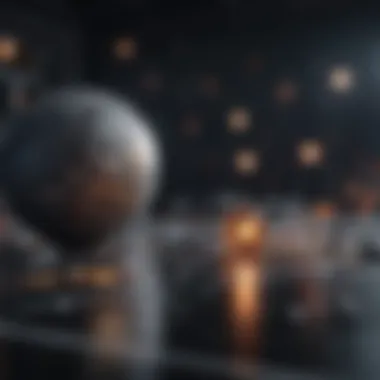

“Teaching math effectively isn't just about formulas; it's also about nurturing the curiosity of young minds.”
Future Directions for Imaginative Math
As we look ahead, the future of imaginative math is not just a mere contemplation; it’s a necessity that caters to the rapid evolution of knowledge in mathematics. The growing interdependence between creativity and mathematical reasoning shrinks the boundaries that once confined these fields. The exploration of future directions in this realm is essential, especially considering how they might influence educational practices and research approaches.
Emerging Trends in Mathematical Research
Recent trends in mathematical research emphasize interdisciplinary collaboration. Researchers are increasingly drawing insights from fields such as psychology and art to enhance mathematical understanding. For instance, the fusion of mathematics with cognitive science leads to a deeper comprehension of how students think. This knowledge can reshape how educators approach teaching, moving beyond traditional methods to those that embrace imaginative thinking.
"The capacity to create is the greatest gift of human nature, and it plays a pivotal role in mathematics as well."
Key Trends to Consider:
- Data Science and Artificial Intelligence: As advancements continue in technology, the integration of AI into mathematical research allows for innovative approaches to problem-solving. Data science is becoming a crucial part of mathematical investigation, prompting researchers to explore queries that were once deemed unsolvable.
- Visualization Techniques: Technologies that support visual learning offer new ways to understand complex mathematical concepts. The use of software that allows students to visualize mathematical structures and relationships encourages creativity in problem resolution.
- Gamification in Learning: Game-based learning is trending, turning complex mathematical problems into engaging challenges. By applying playful elements to mathematical tasks, educators can inspire students to think creatively while improving their problem-solving abilities.
These trends not only open doors to new avenues of understanding but also signify a shift in how educational systems might adapt to nurture creativity alongside traditional mathematical methodologies.
The Role of Technology in Creative Math
Technology’s influence in the realm of imaginative math stands out, providing tools that support both teaching and research. In an age where learning is often mediated by screens, tapping into technology can play a vital role in engaging students and enhancing their mathematical thinking. Here’s how:
- Interactive Learning Platforms: Websites and applications that allow for interactive mathematical experiences can make learning more dynamic and engaging. Students can experiment with various mathematical concepts at their own pace, encouraging a sense of exploration that is critical in imaginative math.
- Virtual Reality (VR): VR can create immersive environments where students can interact with complex mathematical structures, pushing the boundaries of traditional learning. By engaging multiple senses, VR not only helps in better retention but also cultivates a deeper understanding of abstract concepts.
- Online Collaboration Tools: As collaboration becomes essential in learning, technology facilitates connections between diverse learners worldwide. Through platforms such as Reddit and Facebook, students can share mathematical ideas, fostering a community of diverse thinking and creative solutions.
In summary, these future directions in imaginative math underscore the importance of adapting to modern contexts. By embracing new trends in research and leveraging technology’s role in education, the future can hold further possibilities for integrating creativity with mathematical thought. Engaging with these ideas, educators and researchers alike can pave the way for a more holistic understanding of mathematics that is prepared to meet tomorrow's challenges.
Case Studies
Understanding the practical applications of imaginative math is essential for both educators and learners. Case studies serve as a bridge between theory and practice, illuminating the diverse ways in which creative math approaches can be implemented successfully in educational contexts. They not only showcase tangible results but also encourage further exploration of innovative pedagogical methods. When we reflect on these real-world examples, it becomes evident that imaginative math can foster a deeper engagement with the subject.
Successful Applications of Imaginative Math in Education
One striking example of imaginative math applied in educational settings is the use of project-based learning. This methodology allows students to tackle complex problems through creativity, collaboration, and critical thinking. Here’s a snapshot of how imaginative math reshapes learning:
- Integration with the Arts: Schools have combined math with visual arts to teach geometric concepts through painting and sculpture. Students not only learn about shapes but also apply their understanding in creating artwork, making mathematics more relatable and enjoyable.
- Math in Real Life: Educators emphasize real-world connections to math by involving students in community projects. For instance, students may participate in designing a garden where they calculate area and perimeter, or even budget for supplies, connecting numeric concepts with daily life.
- Technology in Learning: Using tools like GeoGebra or virtual reality, students can visualize mathematical concepts. This interactive experience encourages them to experiment and engage with abstract concepts more tangibly.
Through these examples, we see a clear shift from rote memorization to hands-on experiences, illustrating the effectiveness of imaginative math in fostering understanding and application of mathematical principles.
Notable Projects and Research Initiatives
Several noteworthy initiatives highlight the integration of imaginative math in educational research:
- The MAA (Mathematical Association of America): This organization has launched programs that focus on creative problem-solving among high school students. Their Math Olympiad encourages participants to approach problems with innovative methods, allowing students to showcase their unique perspectives on challenges.
- Math Circles: These community-based groups facilitate discussions and problem-solving among students and professionals. They focus on presenting mathematics not just as a disciplinary subject, but as a creative field where imagination leads to partnerships and solutions, thus inspiring students to think outside the box.
- Research at MIT: The D-Lab at MIT emphasizes human-centered design in solving real-world problems. Students engage with math through projects addressing social issues, training them to use their creativity for practical applications, and simultaneously enhancing their mathematical reasoning.
"Imaginative math is not solely about numbers; it's a framework of thought where creativity sparks innovation."
By examining these initiatives, we can discern how imaginative math is promoting engagement and critical thinking, preparing students to meet the challenges of an ever-evolving world. In tying together theory with practical application, these case studies provide a clearer understanding of how to nurture a mathematically imaginative future.
Finale
Recapping Key Insights
- The Role of Creativity: We’ve seen how creativity isn't just a happy add-on to the traditional math curriculum; rather, it's an essential ingredient that can spark interest and passion in students. By allowing space for innovative approaches, educators can help students grasp complex concepts more readily.
- Historical Context: The discussion of historical perspectives sheds light on how transformative figures in mathematics broke conventional boundaries through imaginative thinking. This legacy provides a roadmap for contemporary educators to challenge norms in a similar fashion.
- Practical Applications: The integration of imaginative math in real-world scenarios can lead to remarkable solutions to intricate problems. Whether in engineering, economics, or environmental studies, imaginative math fosters a mindset that values ingenuity alongside accuracy.
- Teaching Strategies: We highlighted various methods that encourage creative thinking among students. Techniques such as project-based learning and collaborative problem-solving enable learners to discover mathematical concepts in engaging and practical contexts.
- Future Directions: Emerging trends and technology are reshaping the landscape of math education. This evolving nature encourages continual reassessment of teaching methods to ensure they align with the needs of modern learners.
"Imaginative math not only shapes minds but also molds future problem solvers ready to tackle tomorrow's challenges."
Invitation for Continued Exploration
The journey into imaginative math shouldn't halt with this article. Rather, it's an invitation for educators, students, and all lifelong learners to delve deeper into this rich field. Here are some pathways to consider:
- Engage with Local Math Communities: Join online forums on platforms like Reddit to exchange innovative teaching strategies and ideas.
- Attend Workshops and Conferences: Participate in events that focus on creative approaches in education, thus networking with like-minded individuals.
- Continued Professional Development: Educators are encouraged to pursue training sessions and resources that specifically tackle imaginative methodologies in math.
- Experiment in the Classroom: Don’t shy away from trying out new teaching techniques. Observing student responses to imaginative methods can be an invaluable feedback loop.
- Research Opportunities: Scholars in mathematics education can further investigate the connections between creativity and problem-solving to contribute to the growing body of knowledge in this field.
By embracing a culture of exploration and curiosity, we prepare our future generations not just to solve equations, but to think outside the box to innovate and inspire.















